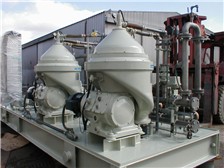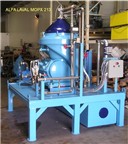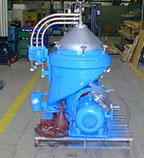A surge of oil and gas while drilling an exploratory well 5,000 feet below the surface caused an explosion on 20th April, killing 11 rig workers.
 The blowout preventer system – the most critical piece of equipment on the rig – failed. The blowout preventer has giant shears which are designed to cut and seal off the well’s main pipe but the valves didn’t close.
The blowout preventer system – the most critical piece of equipment on the rig – failed. The blowout preventer has giant shears which are designed to cut and seal off the well’s main pipe but the valves didn’t close.The system couldn’t be remotely shutdown either, and after burning for 36 hours the rig sank; there’s has been a constant leak from the well ever since. A rig worker revealed to the BBC that he’d identified a leak in the control pod in the blowout preventer system weeks before the explosion. The leak wasn’t fixed – instead the unit was shut down and a second one relied on. The worker said BP and Transocean – owner of the rig who is responsible for the operation and maintenance of the equipment – were both informed, and he is not sure if the leaking pod was turned back on before the explosion.
Disasters such as this shouldn’t be allowed to happen; so the control pod on the blowout preventer failed –what happened to the second unit? Was the first unit ever fixed? These questions remain unanswered as people are turning their attention to the immediate repercussions of the incident. The questions on everyone’s lips are now how can we stop the oil pumping into the sea, and how to we contain the oil which has already escaped?
BP estimate that the well is spewing between 35,000 and 60,000 barrels a day. They’ve tried to contain the leak with booms, break it up with chemical dispersants, and skimming then burning to rid the surface of oil. But none of this appears to be particularly successful – or environmentally friendly – the well continues to leak, threatening the local wildlife and livelihoods of the fishermen in the Gulf of Mexico.
In an attempt to stop the leak, BP have tried lowering a huge containment dome over the main site, but this failed after frozen hydrate crystals formed from the leaking gas. They also tried a top-kill procedure to plug the well by pumping mud, rubber and golf balls into the well to stop the flow – this also failed.
In early May, BP began drilling two relief wells to connect with the original well and pump in a heavy liquid to stem the flow – a project which won’t be complete until mid-August. A damaged riser pipe has also been cut to close the blowout preventer and a cap lowered onto the top section so oil and gas can be funnelled to a drill ship for collection. BP estimates that they’re collecting around 28,000 barrels a day – less than 50% of the estimated daily escape.
The company are now trying to use hoses and a new manifold system to pipe oil and gas to surface vessels to increase the amount of oil captured, and hope to develop a permanent containment system directing oil and gas to free floating riser pipes attached to containment vessels. How effective this will be is yet to be seen, and undoubtedly has been hampered by Hurricane Alex sweeping the Atlantic.
Recent developments have seen BP fit a new cap over the well and it appears to have stopped the flow of oil into the Gulf, but as President Obama pointed out, this is still in the testing phase and the true results are yet to be seen. Even BP is warning that the cap will not be a permanent solution and drilling on the relief wells will continue after testing of the new cap.
As with any type of disaster, celebrities are keen to get involved to do their bit, but rather than the usual charity single offering – which would be inappropriate in this case – Kevin Costner’s company, Ocean Therapy Solutions, is offering the use of 32 oil separation machines to clean water. The machines – capable of cleaning 210,000 gallons of water a day – use centrifuge technology to separate oil and water. It gives 99% purity water – with the separated oil being stored in tanks –without using chemicals and biologic agents.
A clean-up operation has already begun, and will continue for several months – maybe even years – after the leak has stopped. The escaped oil could affect the wetlands around the Gulf – which equates to around 25% of the total US wetlands – and many areas and animals are already suffering the aftermath of the leak. A 78,000-square mile fishing area around the site has had to be closed as scientists fear for the health of wildlife in the area, but the true scale of the disaster really remains unknown.
The bill for the clean-up operation is sure to run into millions – if not billions – of dollars, and who will foot the bill is unclear but if President Obama gets his way, it will be BP. What we do know is that the repercussions of this incident will continue to haunt not only BP and the oil industry, but the Gulf of Mexico for years to come.
source: www.labnews.co.uk












